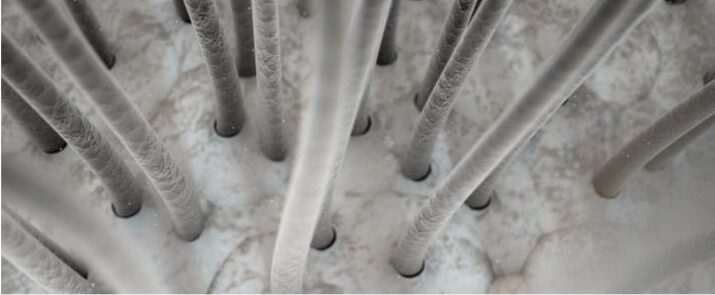Common Causes of Hair Loss
What You Need to Know
Hair loss, also known as alopecia, can result from a variety of factors, including genetics, hormonal changes, aging, medical conditions, nutritional deficiencies, and stress. The most common type, androgenetic alopecia (pattern hair loss), is hereditary. Other causes include autoimmune diseases, medications, and environmental factors. Early diagnosis is important to determine the cause and explore appropriate treatment options.
FUT (Follicular Unit Transplantation)
Pros:
- Higher number of grafts in one session
- Often lower cost compared to FUE
- Suitable for advanced hair loss
- Can yield thicker results in one area
Cons:
- Leaves a linear scar on the donor area
- Longer recovery time
- More post-surgery discomfort
- Not ideal for very short hairstyles (scar might show)
FUE (Follicular Unit Extraction)
Pros:
- No linear scar (tiny dot scars instead)
- Faster healing and less discomfort
- Ideal for wearing very short hairstyles
- More flexibility in harvesting grafts from different areas
Cons:
- Can be more expensive
- Takes longer to complete (individual follicle extraction)
- Risk of lower graft survival if not done expertly
- May require multiple sessions for large areas
What Causes Hair Loss?
What Causes Hair Loss?
Male and Female Pattern Baldness
Hair thinning and loss are influenced by various factors such as genetics, aging, and hormone sensitivity—particularly to dihydrotestosterone (DHT) in men. Some individuals start to notice hair loss as early as their teens or twenties. According to the American Board of Dermatology, hereditary hair loss impacts around 50 million men and 30 million women in the U.S.
This type of hair loss can be passed down from either the mother’s or father’s side—or both—and affects people of all backgrounds. By the age of 50, nearly half of both men and women display visible signs of hair loss, with many men losing about 50% of their hair volume
Androgenetic Alopecia
Androgenic Alopecia is the type of hair loss experienced by most people seeking treatment. In men this condition is often referred to as Male Pattern Baldness and in women it is known as Female Pattern hair loss. The term Androgenic Alopecia is used to describe the genetic predisposition for males and females to experience pattern baldness. Miniaturization is a process by which hair becomes smaller and finer with each growth cycle until finally, it stops growing altogether. A progressive increase in dihydrotestosterone (DHT) is widely accepted as the cause of miniaturization.
Alopecia Areata
Alopecia Areata (AA) is recurrent and can cause hair loss in any hair-bearing area. Commonly the condition is evidenced by round or oval bald patches on the scalp or in the eyebrows. The hair will normally grow back within a few months. The condition can progress to loss of all scalp hair (alopecia totalis). The cause of Alopecia Areata is unknown but commonly thought to be an autoimmune disorder and can be exacerbated by stress or anxiety. The most common treatment is with topical or injected steroids. The prognosis is good if the Alopecia Areata has been present less than one year. The prognosis is not as good if the disease has been present for longer periods. Hair restoration surgery is not indicated for patients with Alopecia Areata.
Scarring Alopecia
Scarring alopecia is hair loss due to scarring and can be attributed to many disorders including injury to the scalp cause by physical trauma, burns, other kinds of surgeries, diseases such as Lupus or shingles, and bacterial infections. Hair replacement surgery can sometimes be indicated in patients with inactive scarring alopecia. If you are suffering from baldness secondary to any of these conditions, contact a dermatologist for a consultation.
Scarring Alopecia
Trichotillomania refers to habitual, compulsive plucking of hair from the scalp or other hair-bearing areas of the body and in time, can lead to scarring alopecia. The condition is commonly associated with obsessive-compulsive disorder. Hair loss in affected areas can be transient or permanent, depending upon the severity of the condition. Untreated, the condition can lead to scarring alopecia.
Practices to Avoid for Hair Loss Prevention
To maintain healthy hair and prevent further loss, consider steering clear of the following:
Conclusion
Understanding the causes of hair loss and being aware of detrimental practices are crucial steps in prevention and management. For personalized advice and treatment options, consider consulting with a qualified hair restoration specialist.


